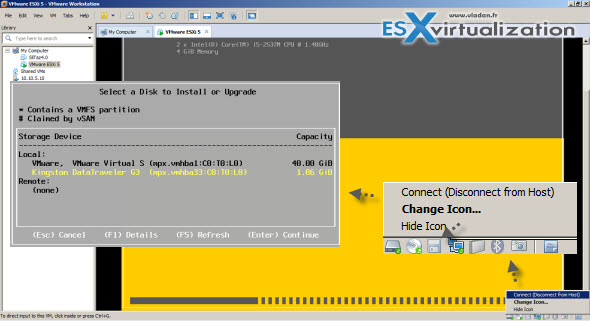

- Install vsphere client 5.5 on server 2016 install#
- Install vsphere client 5.5 on server 2016 software#
- Install vsphere client 5.5 on server 2016 password#
- Install vsphere client 5.5 on server 2016 license#
Review the settings and click Next on vCenter Single Sign On Information page. Choose the inventory size that suits your environment and click Next. You can edit the port settings here if you need to. Choose Create a standalone VMware vCenter Server instance option and click Next.
Install vsphere client 5.5 on server 2016 password#
This is the local username and password to login to vCenter server. Now enter the vCenter service account information as shown below.

In this case, the database user is AD integrated. Under Database Options, choose, use an existing supported database and click Next. Then installation of vCenter Server will start. The installation of vCenter Inventory Service will also start automatically.
Install vsphere client 5.5 on server 2016 install#
Now review the installation option and click Install button. On the Change destination folder page, browse the destination location to install vCenter Single-Sign on components. The default port number 7444 is fine for single sign on purpose. On the Simple Install Port Settings page, configure the port number and click Next. On the Simple Install Configure Site page, type the site name and click Next. You can change it later when you sign into vCenter server using this username and password. Notice, the default domain is vsphere.local and you can’t change it. In the vCenter Single Sign-On Information page, type the password. In the Simple Install prerequisite page, the installation will perform prerequisite check as shown below.
Install vsphere client 5.5 on server 2016 license#
In End-User License Agreement page, accept the License Terms and click Next. Click Next on the Welcome to the vCenter Single Sign-On Page. In the first page of installation, select Simple Install option and click Install button. Here, I will choose simple install as this will be single server installation. You can install each components in different server but for now, VMware recommends to install all the components in single server. You have two main option to install vCenter server, simple install or custom install.

To start the installation, login to vCenter Server, insert the vCenter installation disk and run the install. Then, you can begin installing vCenter 5.5 in Server 2012. You create user account in Domain Controller and ODBC database connection in SQL server. Because, before installing vCenter, we need to create user account to manage vCenter server and create ODBC database connection. I have already installed SQL Server 2012 in Server 2012 R2 on MBG-SQL-DB01 virtual machine. So don’t forget to check the requirements.
Install vsphere client 5.5 on server 2016 software#
Minimum hardware and software requirements for vCenter server depends upon installation scenario. Both vCenter and database server are member of active directory domain. There are three virtual machines, MBG-DC01 is a domain controller, MBG-VCENTER01 is a Server 2012 virtual machine – this is where we will install vCenter and MBG-SQL-DB01 is SQL Server 2012. ESXi hypervisor is already installed in physical machine. Install vCenter 5.5 in Server 2012 R2 with SQL Server 2012 Regarding database options, you can choose either dedicated SQL database Server or Oracle database server for vCenter server, or you can go with default express database. vCenter needs database to store all the vSphere components data like configuration, statistics, etc. In this post, I will show steps to install vCenter 5.5 in Server 2012 R2 with SQL Server 2012. The components are: Single Sign-On, vSphere Web Client, vCenter Inventory Service and vCenter Server. There are different pieces of vCenter server that works together. First – You can install vCenter Server in Windows Operating Systems, Second – vCenter Server Appliance (VCSA) which is based on SUSE Linux platform. With release of vSphere 5.5, VMware has made lot of improvements in vSphere web client.

VCenter server is central place for managing all the vSphere components like ESXi hosts, clusters, virtual machines, virtual machine templates, replication, high availability and so on.


 0 kommentar(er)
0 kommentar(er)
